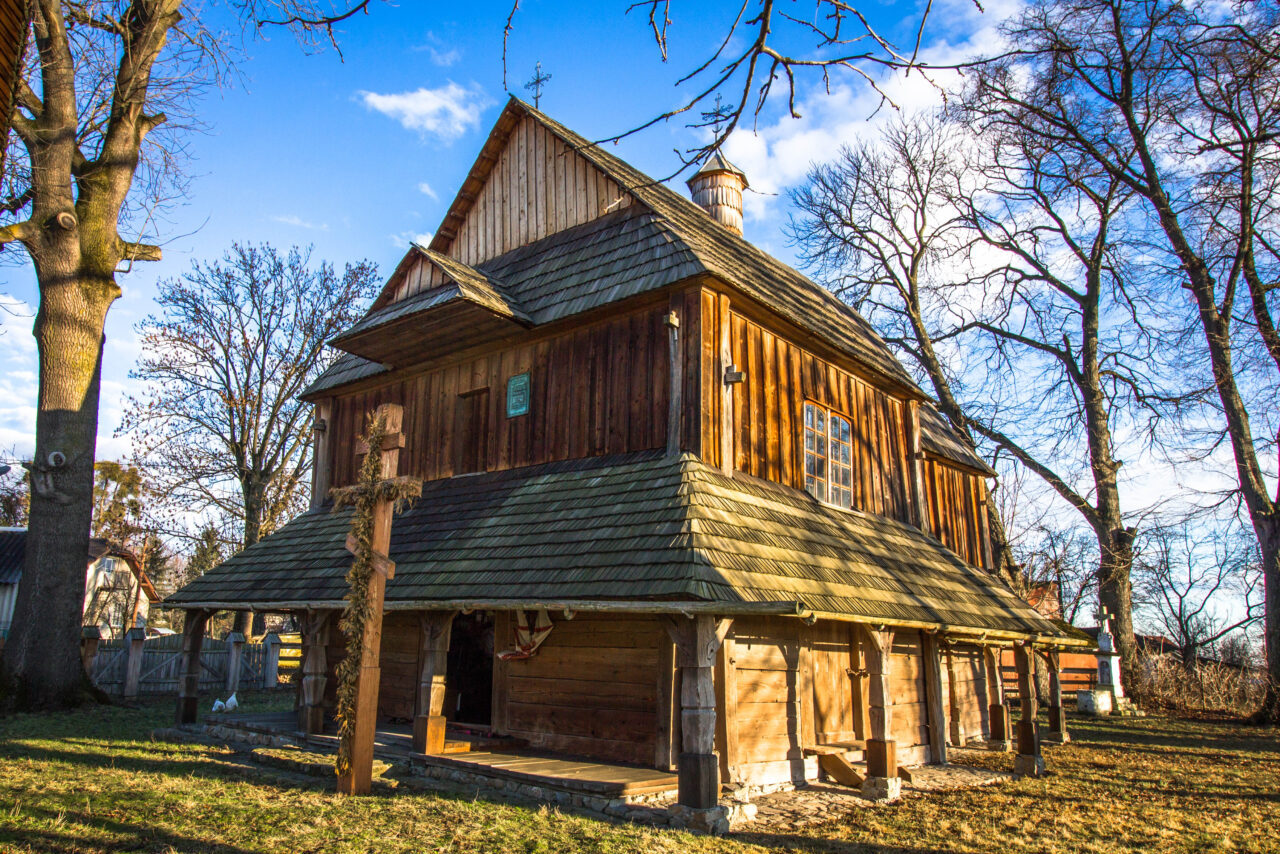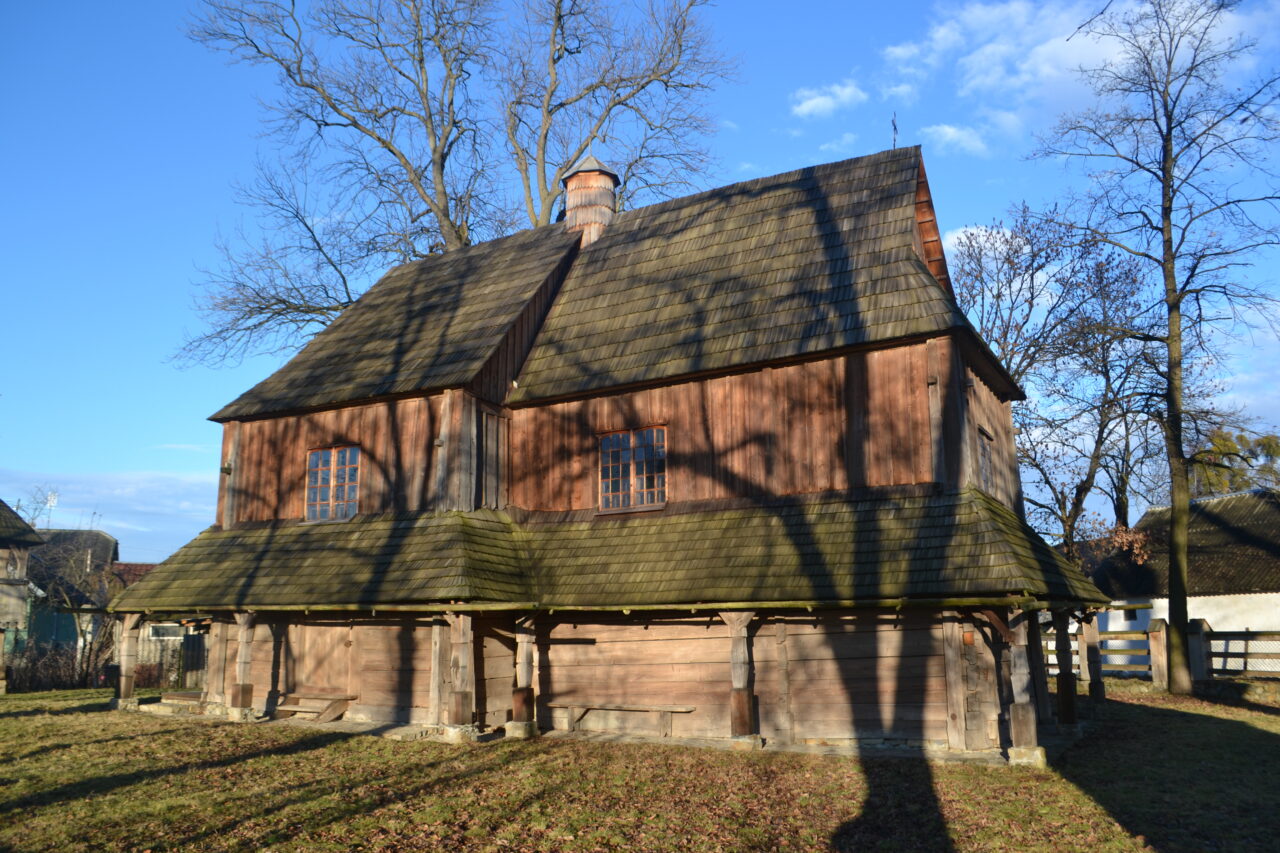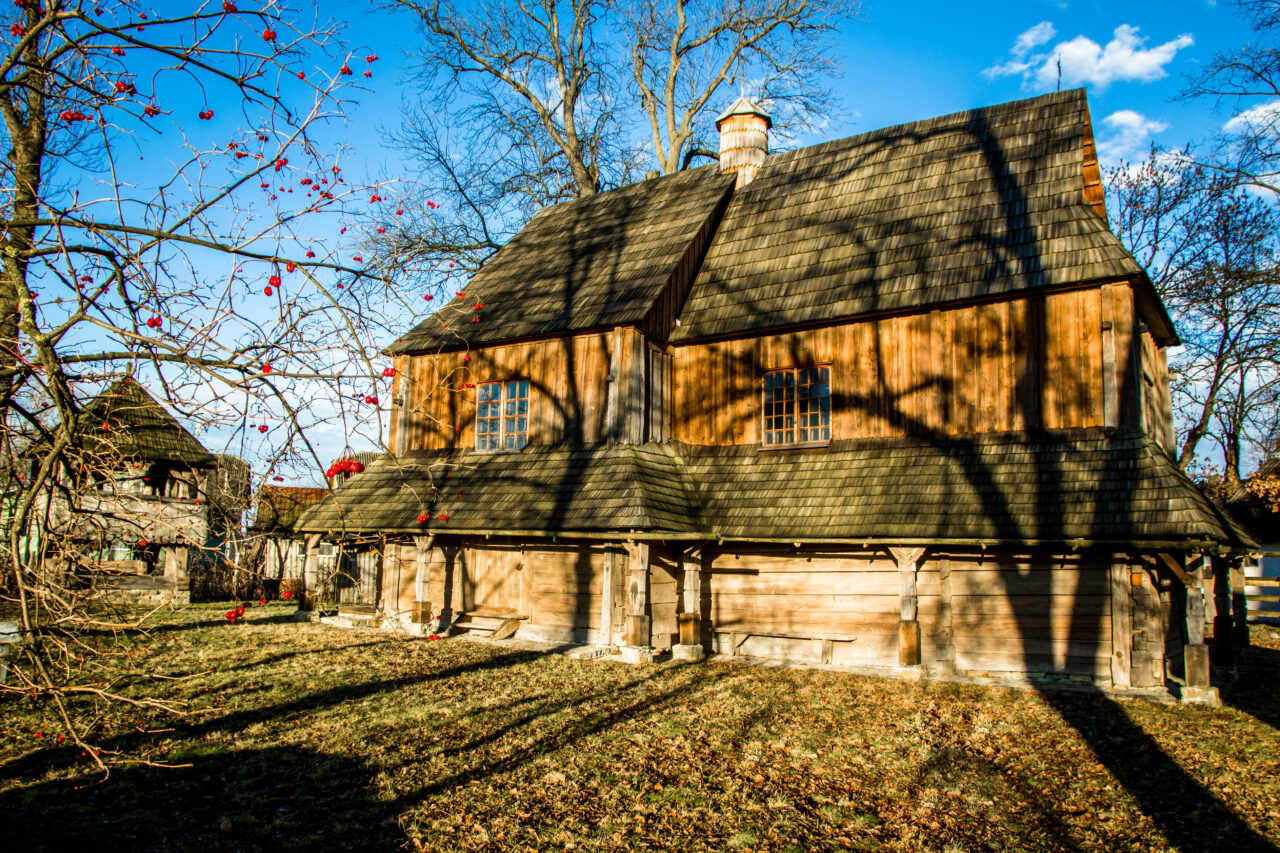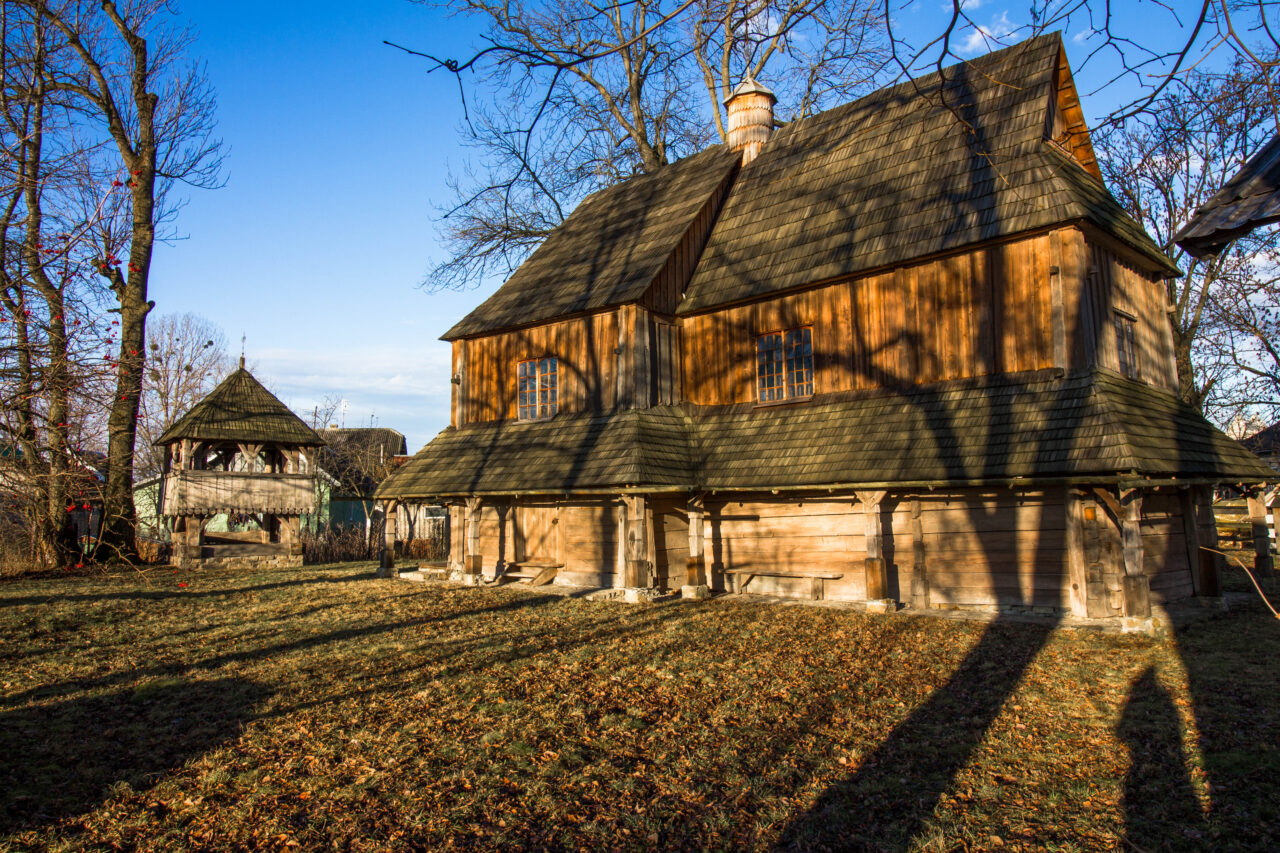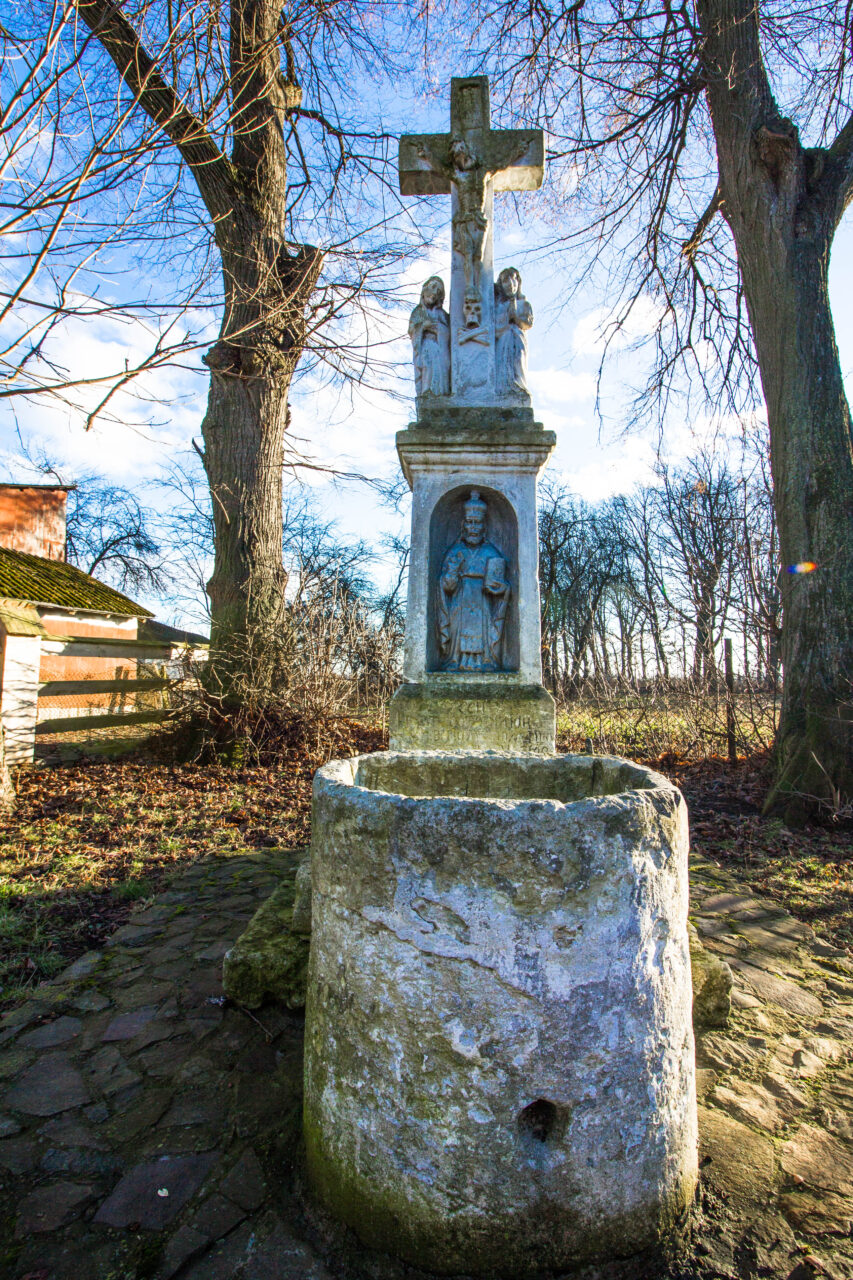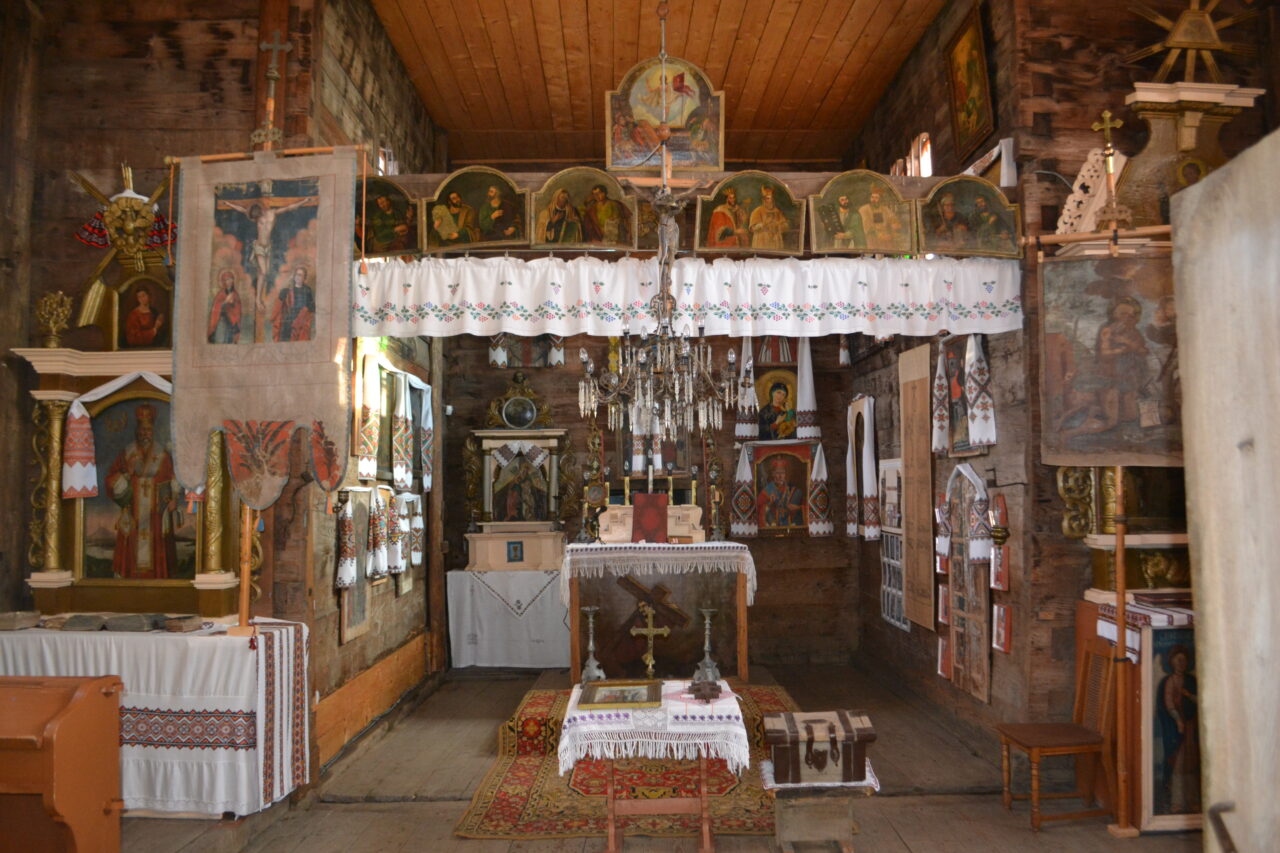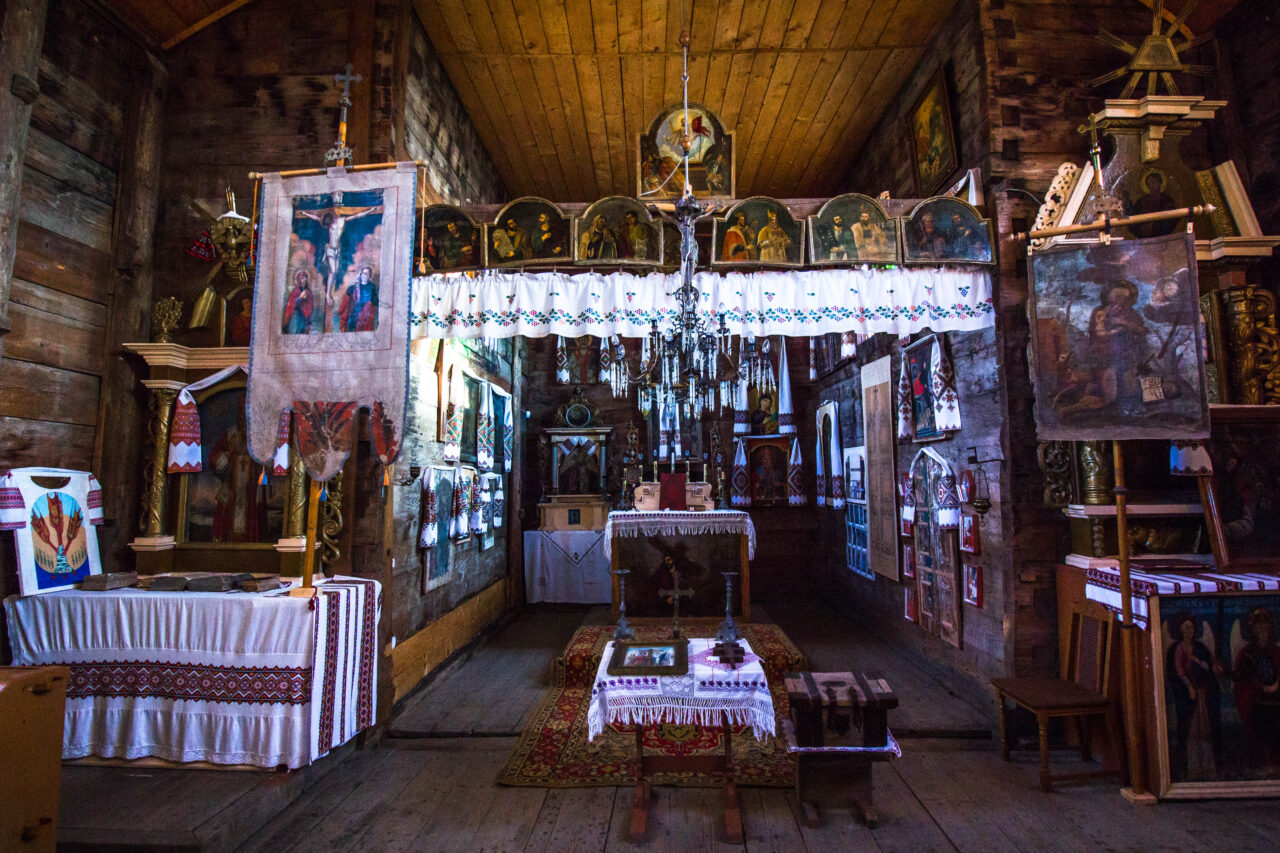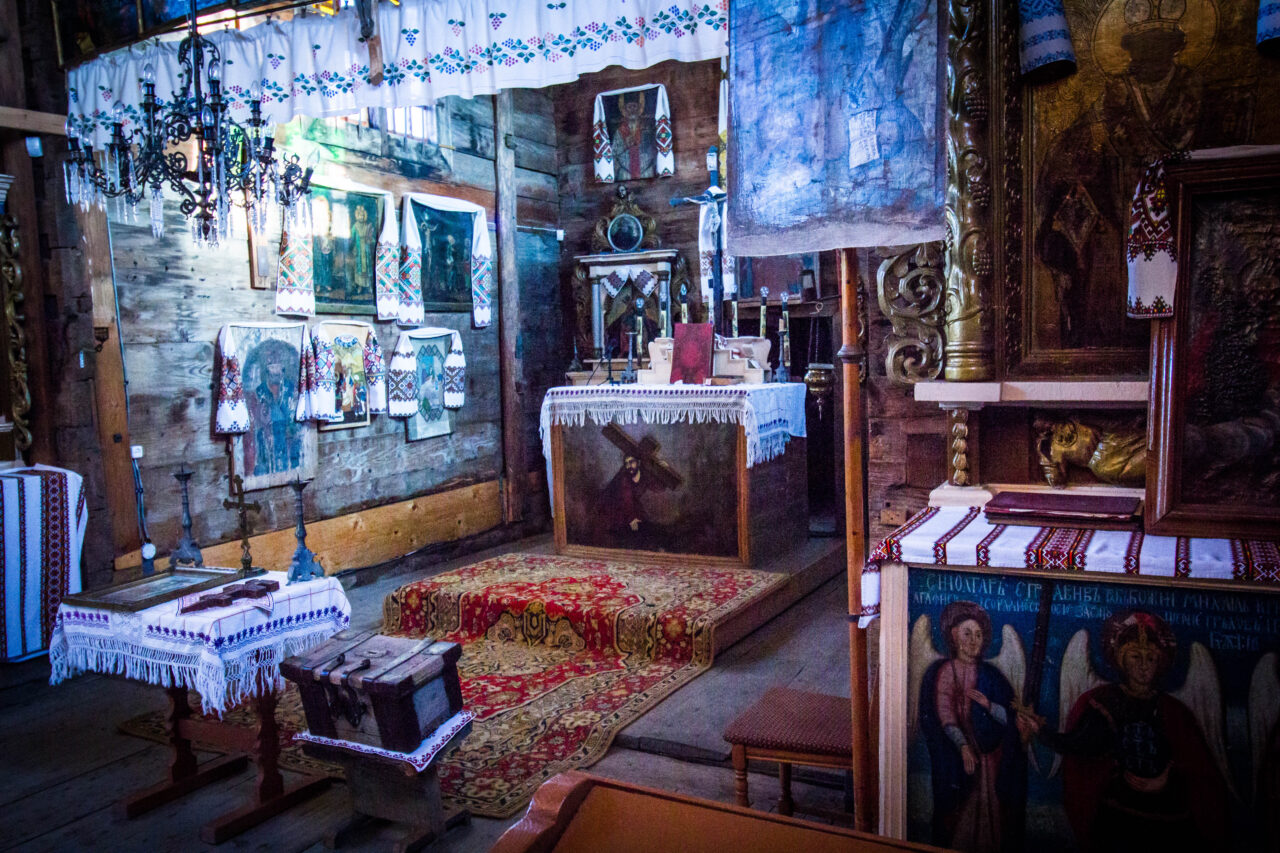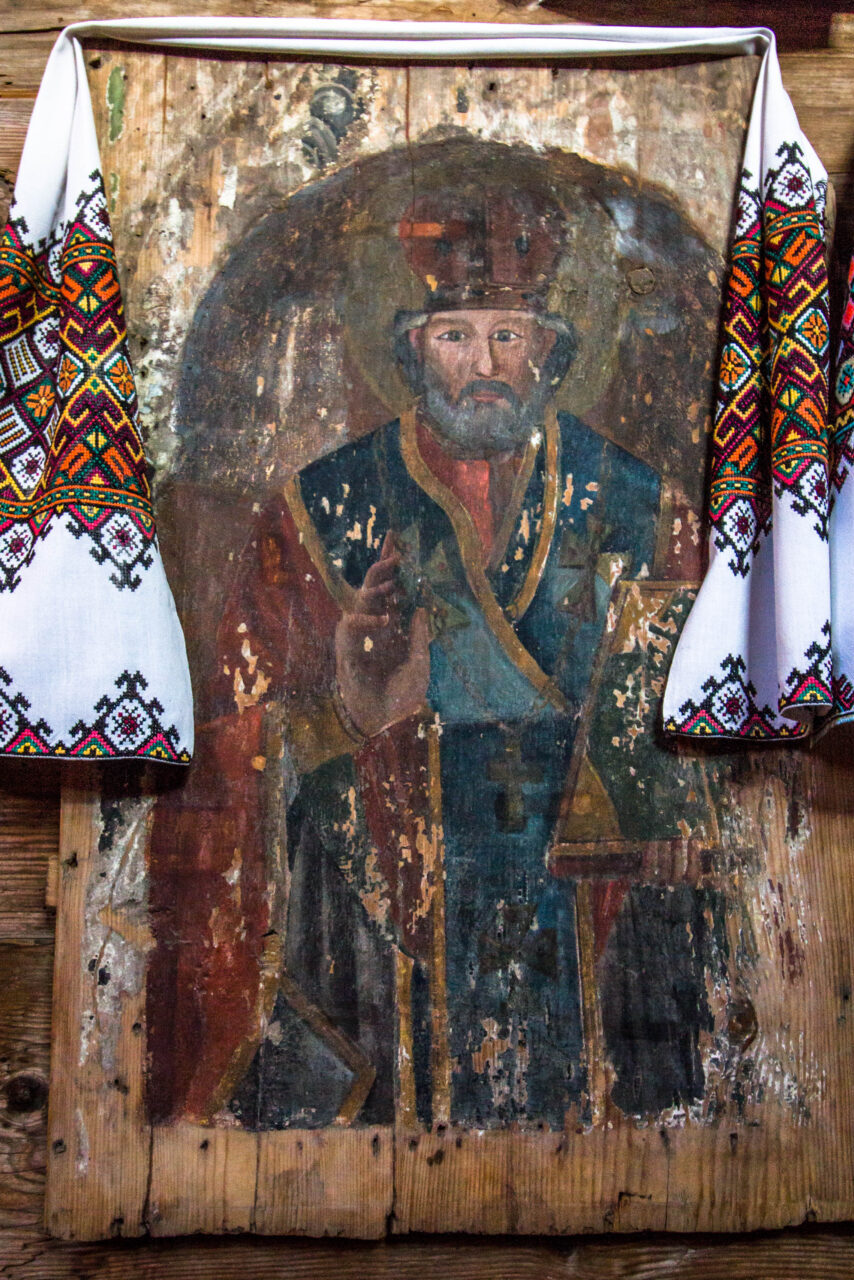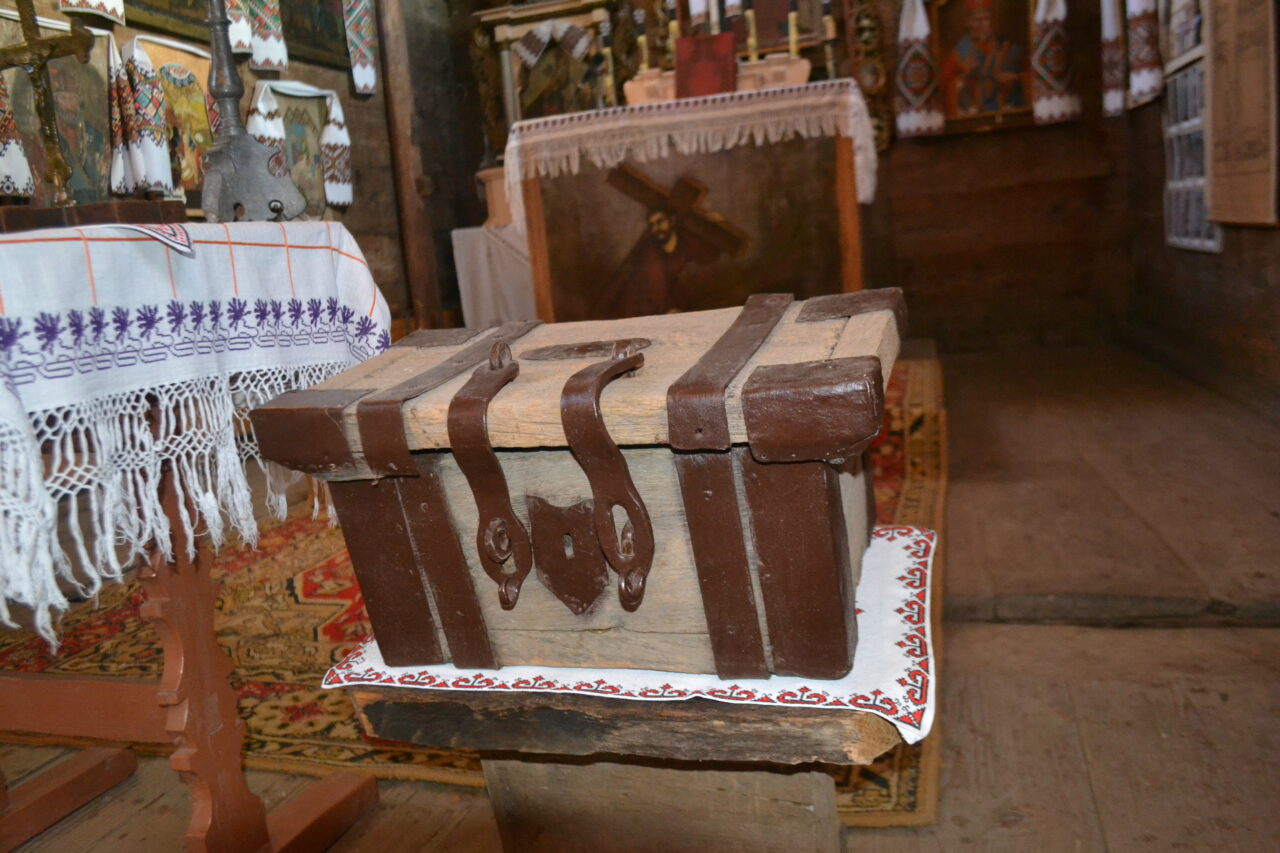Dobrivliany is as long as ‘Boiko’s world’, picturesque and quite rich village located on the Stryi-Zhydachiv plain of Precarpathia. Here, near the brick church, in the shadow of age-old ash trees is a real treasure – the Church of the Exaltation of the Holy Cross. The rare laconic classical-archaic type of temple will enchant you. This is a small two-pipe roofless temple, whose each temple is covered with a gabled tent roof with anchorages. The church is an architectural monument of national importance.
But everything is in order. You will not find the exact date of the church construction. History tells that in that part of the village a respected Mrs. Anna once lived and endowed a small church in this picturesque place in 1629, where she prayed to the Lord and nestled to the Holy Cross. The temple icon of the Dobrivlia Mother of God, which the restores date back to 1590-1610, confirms the construction date of the original church. It can be seen in the new church of St. Peter and Paul.
According to the will, the family buried this God-loving woman at the very entrance to the church. In the 18th century the founder’s family added money and completed the second, slightly larger and wider part of the church. The tomb was moved to the left side altar of the new nave. In 2012, during the restoration of the church and its foundations, restorers came across this brick burial. Thus, most likely the beginning of the 18th century (1738) is the date of the church completion and consecration in the form in which it is today.
The whole church has two tiers. Above the first tier around the perimeter of the church there is a long gallery that rests on figured hewn pillars and forms a gallery. The entrance door to the temple is framed by massive doorposts. The walls above the long gallery are vertically covered with boards, and under the long gallery you can see uncovered powerful logs.
The very long gallery of the temple is covered with shingles and has an interesting gutter. It is wooden, solid, attached to hooks made of spruce root. The roof and the round roof lantern of the middle of its ridge are covered with shingles. Originally the foundations of the temple stood just on the ground. During the latest restoration in 2012 the church was set on the foundation, the walls were reinforced and today the church is slender and strong.
The church interior is interesting and quite unusual. You can get inside through the door of sacristy – the service part behind the altar, where the priest’s clothes and all church utensils are kept. Today the church is a kind of a museum of icons and objects of church use. There are nominal icons, donated and signed by patrons; there are found and restored banners with the image of St. Onuphrius and the Passion of Christ. These treasures are almost 200 years old. There is no altar in the temple – only the Beautiful gates remain there. And on the joist – a beam under the ceiling, which is untypical of Ukrainian temples, today there are icons of the local row and crucifix. Most of the icons in spite of being ancient don’t belong to this church.
In the south-western part of the churchyard there is a surprisingly small and neat square in plan, frame bell tower. It is the same age as the original church. The first impression is that this is the upper part with a hording from the once high defensive tower-bell tower. But, coming closer, you can see that from the lower main frame there is only one belt, supported by a modern foundation. Thus, the originally built tower was a little higher.
The bell tower has a complex two-layer structure of frames. Bells were attached to the inner frame, and a tent roof and all decorative elements lean on the outer frame. Today the bell tower under the old ash trees looks like a decoration to an ancient fairy tale. Until 1939 there were three bells. One of them is still heard over the village near the brick church, and the other two, according to the old timers, have been hidden in a field near the village and haven’t been found yet.
And there is another small feature in the churchyard – a cross and a reservoir for the water consecration, figuratively carved from stone.

